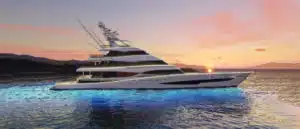Inlets along the coasts of the United States can present major navigational challenges to mariners. Shifting sands, strong currents, dangerous waves, and other factors combine to make some inlets notoriously difficult to traverse safely. For boaters, it is important to be aware of the most hazardous inlets before setting out on a journey.
Oregon Inlet, North Carolina
Located along the Outer Banks of North Carolina, Oregon Inlet is widely considered to be one of the most dangerous inlets on the East Coast.
The inlet was formed in 1846 during a major hurricane that opened up a new passage between Pamlico Sound and the Atlantic Ocean. Since then, the inlet has become known for its constantly shifting sands and challenging navigation.
With an average depth of just 14 feet, Oregon Inlet is prone to shoaling and build up of sandbars. The depth and position of channels can change rapidly, sometimes even daily.
Strong currents caused by tidal fluctuations add to the complexity. On outgoing tides, current velocities can reach up to 7 knots through the narrow inlet. Waves also build in size when constrained by the inlet’s jetties. All of these factors make Oregon Inlet a notorious challenge for mariners. Even the United States Coast Guard station located along the inlet operates 47-foot motor lifeboats designed specifically for rescue operations in the hazardous waters.
| Year | Oregon Inlet Accidents |
|---|---|
| 2017 | 14 |
| 2018 | 22 |
| 2019 | 18 |
Haulover Inlet, Florida
One of the most dangerous and also most famous inlets in America is Haulover Inlet.
Where is Haulover Inlet?
Located along the Atlantic coast just north of Miami Beach, Haulover Inlet provides a high-traffic passage between the Intracoastal Waterway and the ocean.
The man-made inlet was dredged in 1925 to create a new waterway connection. But despite frequent dredging to maintain its navigation channels, Haulover Inlet remains notoriously dangerous for boaters.
Why Haulover Inlet is So Dangerous
There are a few reasons Haulover Inlet is so dangerous:
- Strong tidal currents flow through the inlet (speeds over 6 knots).
- Sandbars build up rapidly.
- Sandbars shift positions frequently.
Together these factors make navigating the tight confines treacherous. Vessels often end up grounded if they stray outside the marked channel.
During storms, heavy wave action makes traversing the inlet incredibly hazardous. Breaking waves and swells over 10 feet high are common.
And winds blowing across Biscayne Bay can stack up dangerous chop. Mariners are all together advised to avoid Haulover Inlet during unfavorable conditions.
Hatteras Inlet, North Carolina
Also located along the Outer Banks just 30 miles south of Oregon Inlet, Hatteras Inlet presents similar navigational challenges.
Prone to shoaling like its northern neighbor, Hatteras Inlet requires frequent dredging to keep channels open for boat traffic. Wave action from the inlet’s jetties are known to build up large swells capable of capsizing vessels. A shallow bar with depths of just 6 feet in places provides another hurdle for mariners to clear.
During storms and hurricanes, Hatteras Inlet is particularly prone to closing. In 2003, Hurricane Isabel carved a new emergency inlet near Hatteras Village to relieve the rising storm surge. The unpredictable nature of Hatteras Inlet requires vigilance and care when attempting passage. Calling ahead for an update on conditions and channel markings is a prudent move.
| Year | Hatteras Inlet Accidents |
|---|---|
| 2017 | 11 |
| 2018 | 19 |
| 2019 | 12 |
Golden Gate Strait, California
Spanning the opening between San Francisco Bay and the Pacific Ocean, the Golden Gate Strait presents a notorious navigational hazard. Strong tidal currents, turbulent waters, unpredictable winds, and heavy fog contribute to make passage through the strait difficult.
Currents flowing through the narrow opening routinely reach 6 knots. But maximum ebb currents during spring tides can exceed 8 knots.
These swiftly moving waters help stir up choppy seas with waves up to 10 feet tall. Fog also frequently reduces visibility in the strait to under a quarter mile. The combination of factors requires extreme skill to navigate for mariners. Nearly two dozen large vessels have run aground over the years trying to traverse the Golden Gate.
| Year | Golden Gate Accidents |
|---|---|
| 2017 | 8 |
| 2018 | 12 |
| 2019 | 7 |
Jupiter Inlet, Florida
Along Florida’s Atlantic coast, the Jupiter Inlet presents boaters with another notoriously dangerous passage. Connecting the Intracoastal Waterway with the Atlantic Ocean, the narrow inlet is known for its strong tidal currents, rapidly changing conditions, and frequent shoaling.
The currents flowing through the constrained inlet can reach speeds over 5 knots. Just outside the inlet, breaking waves and swells often exceed 10 feet in size.
And subsurface sandbars have a tendency to shift constantly, making it difficult to mark a safe channel. Together these factors have led to many vessels running aground over the years. Being aware of local conditions and exercising extreme caution are a must when navigating here.
St. Lucie Inlet, Florida
Further south along the Florida coast, the St. Lucie Inlet provides another extremely hazardous passage for boaters. Connecting the Indian River Lagoon with the Atlantic Ocean, this narrow and winding inlet is prone to heavy shoaling.
Frequent dredging is required to maintain navigable channels. But shifting sandbars make this inlet unpredictable.
Strong currents exceeding 4 knots also run through the inlet. During times of heavy boat traffic, navigating the tight turns and narrow channels becomes even more difficult. Easterly winds can quickly whip the inlet into a frenzy, making passage unsafe. Careful planning and vigilance is required to traverse St. Lucie Inlet safely.
Ponce Inlet, Florida
The final Florida inlet to make the list of most dangerous is Ponce Inlet located near Daytona Beach. On calm summer days with light wind and an incoming tide, Ponce Inlet can appear deceptively docile.
But the inlet can quickly transform with an outgoing tidal flow and easterly onshore winds.
Maximum ebb currents reach up to 4 knots as water empties out of the shallow inlet. The current combined with waves whipped up by ocean swells and east winds can create treacherous conditions. Shoaling from shifting sands inside the inlet only adds to the complexity.
Ponce Inlet should be treated with extreme care, especially during times of easterly winds.
Columbia River Bar, Oregon
And finally rounding out the list of most dangerous inlets in the United States is the Columbia River Bar along the Oregon-Washington border. Known as “the graveyard of the Pacific,” the Columbia River Bar is widely considered the most perilous inlet in the entire country.
Enormous volumes of water empty from the Columbia River into the Pacific Ocean through this turbulent inlet.
This outflow combines with heavy swell and wave action along the exposed coast to create hazardous conditions. Vessels over 1,600 have sunk or grounded trying to cross the Columbia River Bar. Strong currents, violent breaking waves, and shifting shoal patterns conspire to make this inlet’s reputation well deserved.
In fact, the challenges presented by the Columbia River Bar are so severe that the United States Coast Guard operates a motor lifeboat school here dedicated to training rescue boat coxswains. The Coast Guard motto for working at the Columbia River Bar says it all: “You have to go out, but you don’t have to come back.”
Proper judgment is absolutely vital before attempting to cross this exceptionally dangerous inlet.
In Summary
Navigating coastal inlets in the United States can present major challenges to mariners. Shifting sands, strong tidal currents, dangerous waves, and other factors combine to make certain inlets exceptionally treacherous. Oregon Inlet, Hatteras Inlet, Golden Gate, Jupiter Inlet, St. Lucie Inlet, Ponce Inlet, and the Columbia River Bar rank among the most hazardous passages along the coasts. Being aware of conditions and exercising extreme caution is a must when attempting to traverse these dangerous inlets.











